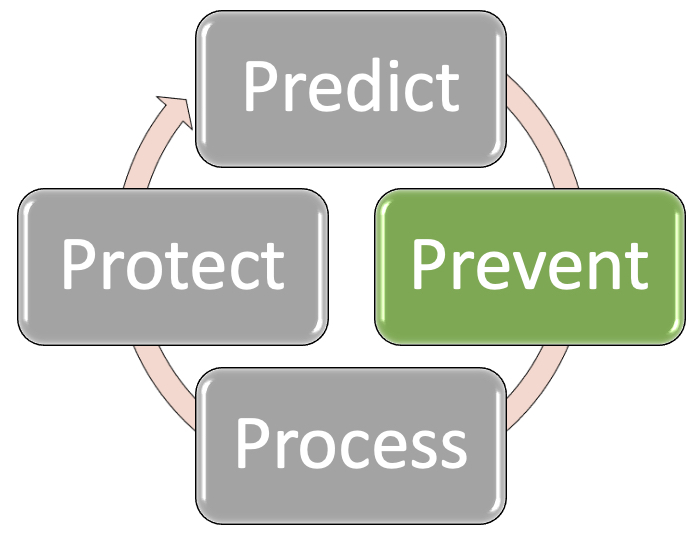Prevention & Minimisation

Prevention must be the fundamental safety principle for the management of arc flash hazard. This is embodied in European legislation and cannot be over emphasised. What this means is that the Duty Holder must always seek to design out, eliminate or remove the hazard at its source.
This leads to the conclusion that most electrical tasks must be carried out with the equipment made dead. To work dead the electricity supply must be isolated in such a way that it cannot be reconnected, or inadvertently become live again, for the duration of the work. As a minimum, this will include the positive identification of all possible supply sources, the opening and locking of suitable isolation points by personal padlocks and for the proving dead at the point of work. This section is dedicated to the fundamental principle of prevention starting with the elimination of live working but then we go on to describe various practical solutions to help the reader to understand and to embrace the various methods and technologies that are available.
5.1 Elimination of Live Working
To reiterate the earlier point, electrical tasks must be carried out with the equipment made dead and isolated wherever possible. However, the actions required to make safe can expose the person undertaking the isolation. Questions of residual risk and competence of the individual will need to be considered. For instance, the safety considerations and competence of an individual making safe an underground high voltage cable to put others to work is going to be of a much higher order then that of someone isolating a piece of equipment from a local isolation point for themselves. The first example is going to require someone with a high degree of knowledge, training and experience working to strict safety rules, applying circuit main earths, padlocks, issuing permits, discharging a spiking gun and often under the supervision of a control engineer. The second example of an individual isolating for themselves carries fewer processes but the risk assessment approach is the same. I will cover this in a little more detail in Chapter 6: Process, Policies and Procedures.
Designers of electrical systems should consider the need to eliminate live work as part of the overall system design. Some of the elimination measures include the segregation of power and control circuits, safe control voltages and currents, finger safe shrouding of terminals and built-in test points.
Even then, the condition of the electrical equipment must be verified before work commences. It is not uncommon to have accidents occur on equipment that has been rendered dangerous, because electrical workers have not reinstated vital safety components such as door interlocks and insulating shielding after completion of work. I will say much more about this in the chapters on Process and also Myths & Mistakes. (Chapter 6: Process, Policies and Procedures, and Chapter 12: Myths and Mistakes)
5.2 Protection Settings
The reason why I have written a dedicated section on protection settings rather than a generic approach to protection is born out of my own practical experience in the field of arc flash prevention. Whilst protection systems will not eliminate the arc flash hazard entirely, they can prevent events from causing serious injury and damage. Having undertaken studies in industry, commerce, utilities, power stations and distribution companies, I can boldly state that over 90% of seriously damaging events can be prevented by performing alterations to protection settings.
Since incident energy is a function of short circuit current and the protective device clearing time, a reduction of the arc flash hazard may be achievable by evaluating the protective device sizes, settings and time current curves. Many times, where the incident energy is at dangerous levels, it is because the upstream protective device’s instantaneous adjustment is set too high, and the device is operating in the long-time delay region. Lowering the instantaneous setting may allow faster trip times resulting in lower overall incident energy. Caution should be exercised however, because lowering a device’s trip setting can create a reliability issue by compromising selective coordination with other devices. This could cause multiple devices to trip during a short circuit and lead to a more widespread outage.
The problem can be solved by changing the device settings only when live work is going to be performed. After the work is completed, the original settings can be restored to maintain existing selective coordination. These types of temporary setting changes are often referred to as “maintenance settings”. There are manufacturers who have devised maintenance setting schemes for this purpose and this is described later in more detail.